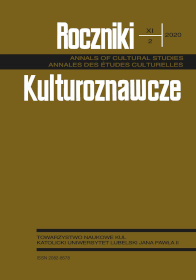Działalność religijna i dobroczynna przeworskiego ośrodka Kanoników Regularnych Stróżów Najświętszego Grobu Bożego w Jerozolimie
Religious and Charitable Activity of the Przeworsk Center of Canons Regulars of the Holy Sepulcher of Jerusalem
Author(s): Zbigniew Rolski, Ireneusz ThomasSubject(s): Christian Theology and Religion, History of Church(es), Theology and Religion
Published by: Towarzystwo Naukowe KUL & Katolicki Uniwersytet Lubelski Jana Pawła II
Keywords: Order of the Holy Sepulcher; Przeworsk; Paschal Triduum; Easter; religious customs; Grave Guard
Summary/Abstract: The very tradition of this order in Poland is one of the more interesting threads of this story. This order introduced, for the first time in this part of Europe, a professional system of hospital treatment for the poor. The magnate family of Tarnowskis, following the policy of the royal court of strengthening the Christianization of the territory of Red Ruthenia in 1394 (1396), received permission to bring the Holy Sepulcher Order (in Poland also called, from the first seat in Miechów, Miechowites) to a pastoral center in Przeworsk in the Church of St. Catherine. The relationship between the Holy Sepulcher buildings and the liturgy and other forms of worship of the Holy Sepulcher had its specific and original character. While the chapels of the Holy Sepulcher associated with Calvary and individual representations of the Tomb that did not belong to the Miechowites were places of the Lord’s Passion cult, in the case of the representations of the Holy Sepulcher their relationship with worship and liturgy had a deeper basis. The Lord’s Tomb in Przeworsk was and is not only an architectural monument, but also an object and place of a living religious cult. However, during the nearly three centuries of existence of the Przeworsk Sepulchrum Domini, we have come across various forms of worship of the Holy Sepulcher, both in the form of liturgical worship and non-liturgical worship, so it is worth discussing them here in more detail. Nowadays, especially important for the continuation of the tradition of the medieval brotherhoods of the Holy Sepulcher, in a sense, are organized groups of young men, and recently, exceptionally also women, who make up the “Turks.” In the vicinity of Przeworsk, they are still particularly visible, especially during the Holy Week.
Journal: Roczniki Kulturoznawcze
- Issue Year: 11/2020
- Issue No: 2
- Page Range: 105-154
- Page Count: 50
- Language: Polish

